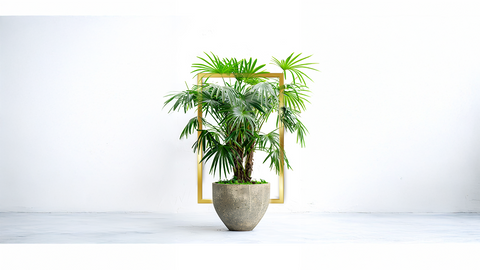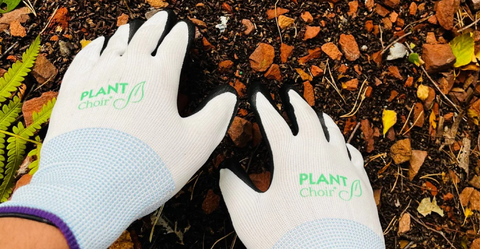November 21 is World Television Day, a cultural moment that invites us to think about how screens shape our lives. If you have been feeling the ache of endless scrolling and series marathons, here is a refreshing pivot. Swap one kind of screen time for another, more mindful kind. Plant music is a gentle way to spend time with your indoor plants while listening to their bio-signals turned into real-time sound. It is screen time that reconnects you with living things, not just pixels.
On this day that celebrates television’s power to inform and connect, we are making a case for a different kind of viewing session. Sit with a houseplant, attach a small Bluetooth biofeedback sensor, and listen as your plant’s shifting electrical patterns become music. That is PlantChoir in a nutshell, and it turns passive watching into a soothing, participatory ritual.
Why a TV holiday is perfect for mindful tech
World Television Day was established by the United Nations to recognize the influence of television on culture and conversation. It lands every year on November 21, and it nudges us to consider what we consume and how we feel while we consume it. If the week’s news cycle leaves you tapped out, this is a great time to choose a small counterbalance.
Plant music is not anti tech. It is mindful tech. Instead of binge watching a plot twist that spikes your adrenaline, you are paying attention to a living system that hums and shifts quietly. The result feels less like an escape and more like a reset. According to the UN’s observance, television shapes public awareness. That is true, yet our personal well being also needs quieter inputs that restore our focus.
Light neuroscience: the attention you rest is the attention you get back
When we stare at fast moving media, our brains work hard to filter noise, track motion, and keep up with constant novelty. This is useful in small doses, and exhausting in large ones. Environmental psychologists have studied a complementary idea for decades. It is called Attention Restoration Theory. In simple terms, certain kinds of experiences, especially gentle contact with nature, help our minds recover from the fatigue that builds up when we focus for too long.
-
Soft fascination helps. Leaves moving, water rippling, a plant unfurling a new leaf, these scenes capture attention without demanding it.
-
Directed attention replenishes. After time in or with nature, people often perform better on focus and working memory tasks.
Stephen Kaplan popularized this framework in the 1990s, and follow up studies show measurable benefits when people walk in a park or even view nature photos.
What about sound
It is not only what we see. Listening to natural soundscapes can support recovery from stress. In one lab study, people who had just done a mentally stressful task recovered more quickly when they listened to nature sounds, as measured by skin conductance and heart rate variability. Birdsong and water noise can be surprisingly restorative.
A bigger picture
Researchers also point to the broader ties between nature experience and mental well being. Reviews suggest links with improved mood and cognition, along with healthier patterns of brain activity. Again, this is not medical treatment, and it is not a cure. It is a supportive, everyday practice that helps many of us feel calmer and more focused.
PlantChoir turns quiet biology into gentle music
Now for the lovely part. Your plant is not silent. Inside those glossy leaves, tiny changes in electrical conductance flow as the plant moves water, opens stomata, and responds to its environment. PlantChoir senses that changing micro current and translates it into music you can hear in real time.
What makes PlantChoir different
-
High resolution sensing. Enhanced sensor with about 1500 percent higher resolution and gold plated connectors for stable contact.
-
Simple wireless setup. Bluetooth biofeedback pairs with our mobile app, no subscriptions required.
-
Creative control. Forty instruments and eight musical scales, assign up to four instruments per plant with ready to use presets.
-
Portable and durable. Lightweight, water resistant, and powered for four to six weeks on a charge.
-
Record and share. Capture sessions in the app and share your plant’s song with friends and family.
Under the hood, we explored higher resolution analog to digital sampling to reduce noise and improve signal quality. The origin story includes conversations with Cleve Backster, an early explorer of plant bio communication. The vision was simple, give plants a voice through music. The result is a tool that supports relaxation, play, and curiosity at home.
Why “watching plants” counts as the best screen time
Think of plant music sessions as a gentle triple play. You are watching a living subject, listening to evolving tones, and noticing your own breath.
-
Your visual attention gets a softer focal point. A leaf’s slow movement and shifting light create soft fascination, which supports attention restoration.
-
Your ears take in natural, evolving patterns. Plant music is not birdsong, yet the variability and lack of harsh transients make it easy to listen for long periods. Studies on nature sounds point to stress recovery, which many users recognize as a calm, grounded feeling.
-
Your body finds a slower rhythm. When we focus on gentle stimuli, we often breathe more evenly and unclench the jaw and shoulders. While individual experiences vary, many PlantChoir listeners report feeling more relaxed and more present during a session.
Television can uplift and inform. It can also flood your senses. A plant music break adds balance. It is the kind of screen time that helps you recover attention rather than drain it.
A cozy World Television Day routine you can try tonight
Set up a little living room ritual that honors the theme of the day while giving your nervous system a pause.
What you need
-
A healthy houseplant
-
A PlantChoir device and the PlantChoir app
-
A comfy seat, warm tea, soft lamp
Steps
-
Clip and connect. Attach PlantChoir’s gold plated connectors to ta leaf, then pair the device to the app over Bluetooth.
-
Pick a sound palette. Choose an instrument family that matches your mood, maybe a warm synth pad, a piano, or delicate wind chimes
-
Set an intention. Try a 15 minute “quiet watch.” No goals, just notice.
-
Dim the lights and watch. Observe leaves, textures, and small movements. Keep your phone’s screen on low brightness so the visual focus stays on the plant.
-
Listen for patterns. Hear how the melody changes when you mist the plant, turn on a fan, or bring the pot closer to the window.
-
End with gratitude. Record the session. Write a one line note about how you felt.
Optional add ons
-
Try a breath rhythm, four counts in, six counts out, while listening.
-
Place the plant near a window so the soundtrack blends with distant outdoor sounds.
-
Invite kids to guess what might make the music change, then test their ideas together.
Plant sound examples for different moods
Below are simple pairings that work beautifully in the app. Each pairing turns your living room into an ambient lounge without stealing your attention.
Calm focus for reading
-
Plant. Peace lily or snake plant.
-
Preset idea. Two sustained instruments, one soft piano, one pad in a major scale.
-
Why it works. Long, slow tones create a background that does not compete with words.
Cozy dinner music
-
Plant. Monstera or pothos.
-
Preset idea. Gentle plucked strings, light bell accents, moderate tempo.
-
Why it works. The melody meanders in a friendly way that feels conversational.
Meditation and journaling
-
Plant. ZZ plant or rubber plant.
-
Preset idea. Breath like synth, low piano drone, minimal percussion.
-
Why it works. Sparse tones mirror a slower breath and help you settle.
Kids’ curiosity session
-
Plant. Spider plant with lots of leaves to clip.
-
Preset idea. Marimba and flute with a playful scale.
-
Why it works. Bright timbres and simple scales invite questions and experiments.
Screen fatigue vs green attention
Too much screen time often leaves us restless. Our attention splinters, and the next day we find it harder to focus. Plant music nudges us toward a different habit. We are still “watching,” yet we are watching something alive and slow. That shift aligns with the research on attention restoration and nature experience. It is not a miracle. It is a practice that many people find soothing, creative, and sustainable.
Practical tips for first time listeners
-
Start small. Ten to fifteen minutes is plenty for your first sessions.
-
Choose a forgiving plant. Pothos, snake plant, or philodendron are easy keepers.
-
Place the sensors well. Pick two healthy leaves on the same plant, clean them gently, and attach the gold plated clips securely.
-
Experiment with light. Many plants show lively changes when you adjust light or humidity.
-
Keep volume low. You want the music to support your focus, not dominate the room.
-
Build a habit. Try a session after work or before bed a few nights a week.
How PlantChoir connects people, plants, and mindful tech
PlantChoir grew out of a simple question. How can we make the delicate inner life of plants feel real in everyday spaces. The creator, James Brown from Kingston, Ontario, brought a background in Psychology and Polygraph to the challenge. With the team, he championed higher resolution sensing to reduce noise, then used music as the medium. The goal was not to prove a medical claim. The goal was to offer a playful, mindful way to connect people with the living systems that share our homes.
People use PlantChoir for yoga, journaling, background ambience, and family science nights. Teachers bring it to classrooms. Gardeners use it during plant check ins. Creatives weave plant tones into ambient tracks. The common thread is simple. Users describe feeling calmer and more present while listening, and they enjoy the way a plant turns into a collaborator.
![]()
Your World Television Day prompt
Tonight, when the living room screen calls, try this tiny switch. Queue your favorite plant, not a show. Clip on PlantChoir, dim the lights, and let your houseplant sing for a while. You may find your shoulders dropping and your attention gathering. You may also rediscover how captivating a single living leaf can be.
![]()
Setup Tutorial: Clips, Soil Probes, and Wet Gels
Use Cases at Home, Yoga, and Events
![]()
Ready to trade a little TV time for green time.
listen to your plants, and bring a living soundtrack into your home.
![]()
External sources and research
United Nations, World Television Day overview, November 21 each year.
Stephen Kaplan, Attention Restoration Theory, foundational overview. Marc G. Berman and colleagues, experiments showing improved attention after nature exposure. Jonas J. Alvarsson and colleagues, nature sounds and stress recovery.
Gregory N. Bratman and colleagues, review on nature and mental health.




